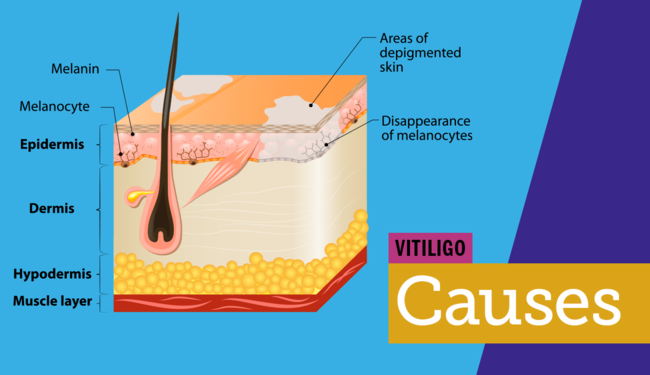
While it is possible for vitiligo to run in families, this is not common. In fact, the vast majority of people with vitiligo have no family history of the disorder. It is also difficult to determine if you will develop the disease based on your family history, since there is no clear evidence that you will develop vitiligo if you have no family history. However, vitiligo is a genetic disorder, and a genetic factor may be involved.
The main factor in vitiligo causes is genetics. Since genes are responsible for controlling all pathways, it is important to understand how genes affect each one. If you are genetically predisposed to vitiligo, your melanocytes will probably be abnormal. Your genetic makeup could also influence your sensitivity to certain chemicals. As a result, studying the genetics of vitiligo patients can be important for finding out whether they are more susceptible to a particular chemical than others.
While vitiligo causes no specific illnesses, it can affect anyone. While it is not painful, it can change your appearance over time. Some individuals with vitiligo may experience negative psychological symptoms such as poor body image and self-consciousness. These people may feel ashamed or embarrassed about their affliction, and seek treatment. A dermatologist can help with treatment and help you find the right path forward. There is no one cure for vitiligo, but there are treatments available.
The condition may occur because of a stressful event. It can be triggered by physical or emotional stress. Interestingly, vitiligo patients with genetic predisposition are more likely to develop the disease. Hormonal changes in stress are thought to be responsible for the skin changes. Additionally, trauma is related to the autoimmune disease. Some researchers believe that exposure to certain chemicals may be an environmental risk factor. These chemicals might speed up the stress pathways in melanocytes, leading to autoimmune inflammation.
The condition may also be caused by an autoimmune disease. The disease is caused by damage to the cells of the skin, which live in different body parts. It can be a genetic mutation, a genetic condition, or an inherited disorder. The affected skin is often white and patches are not noticeable in the winter, but may be visible in the summer. These patches do not tan, so they become obvious during the warmer months of the year.

This condition may be hereditary, which is why 30% of affected kids have a family history of vitiligo. Those with a history of thyroid disease, diabetes, or alopecia are at increased risk. Fortunately, there is no cure for vitiligo. Most people with vitiligo will need to continue treatment for a long time to avoid further deterioration of the condition.
In addition to genetics, environmental factors can contribute to the development of vitiligo. In people with a history of autoimmune disease, vitiligo is a form of the condition. While it may be more visible in the face than in other parts of the body, it can also affect the skin color in other parts of the body. Because the condition affects the skin, there are many potential causes.
Some people with vitiligo have patches of hair on their head or face that turn white or gray. These spots do not contain melanin, which means that they are very sensitive to sunlight. In addition, they have retinal and iris abnormalities that can be affected by the disease. If these factors are present, there is no cure for vitiligo. But it is important to know what causes vitiligo. It is possible to get treatment from a dermatologist, but it is recommended to see a doctor who specializes in vitiligo. You can also find more information about this disease and its treatment on the website prende.org.mx.
There are two main types of vitiligo. Typically, vitiligo causes patches to appear on both sides of the body. Some people with vitiligo may also have hair loss or alopecia. The symptoms of vitiligo vary from person to person, but some people have a genetic predisposition to the disease. Some treatments work well for some, while others may not.
